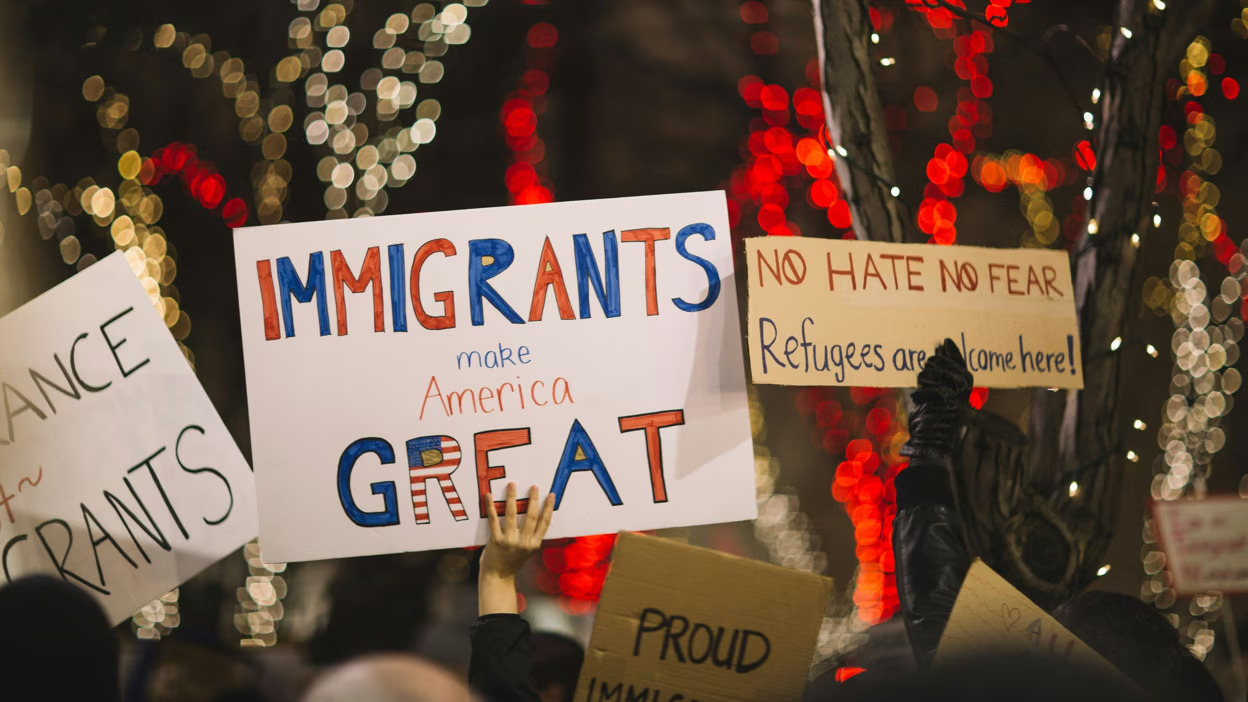The Legal Orientation Program (LOP) offers legal education, as well as referrals for free and low-cost legal counsel, to noncitizens in immigration detention. Managed by the Executive Office for Immigration Review (EOIR) at the Department of Justice (DOJ), the program enables participating detainees to navigate the immigration court system more quickly and efficiently, saving valuable time and resources for both the detainee and the U.S. government. This fact sheet provides an overview of the LOP, details the kinds of services it provides, and explains the important role the program plays in helping ensure due process for detained immigrants.
Brief History
As a result of the expanded use of immigration detention beginning in 2002, Congress provided funding to EOIR for the purpose of exploring “innovative ways to ensure that cases were processed in a timely manner while also increasing access to pro bono legal programs for detained persons.” EOIR’s initial budget for this undertaking was $1 million. EOIR evaluated various legal programs and concluded “that ‘rights presentations’ for detained individuals helped DOJ ensure that all respondents had a clear understanding of their procedural rights, led to cases being completed more quickly, and increased availability of representation [to detainees] with potential meritorious claims to relief.”
In 2003, after reviewing EOIR’s findings, Congress funded EOIR to establish the LOP. Since then, the program’s budget has increased to $10 million per year and has served hundreds of thousands of detained men and women. Despite receiving steady bipartisan support from Congress each year, Attorney General Jeff Sessions instructed EOIR to put a halt to the LOP in April 2018, stating that the Trump administration needed to review the cost effectiveness of the program before approving its continuance. The administration’s decision received immense congressional pushback, causing the Attorney General to reinstate the LOP and allow the program to continue pending a DOJ review. In September 2018, DOJ released the first of three studies that they intend to complete this year. “Phase I” attempts to undermine previous studies of the LOP.
What is Offered Through the LOP?
Currently, there is no recognized right to appointed counsel for noncitizens in removal proceedings. Due to the remote locations of many detention facilities and the lack of available or affordable counsel, the vast majority of detainees navigate the removal process alone. Only an estimated 14 percent of immigration detainees receive legal representation.
While not a substitute for counsel, the LOP provides detainees with vital information about the removal process and the rights of detainees. The program enables detainees to recognize potential defenses against removal and forms of immigration relief for which they may be eligible. EOIR manages the LOP through a partnership with the Vera Institute of Justice, a nonprofit who administers the LOP, which in turn subcontracts to other non-profit organizations to provide the direct services. LOP providers may only offer legal orientation and cannot provide legal representation or services that could be viewed as equivalent to legal representation. Indeed, prior to receiving LOP services, detainees are required to sign a statement verifying that they understand LOP providers are not serving as legal counsel.
LOP services include:
- Group orientations: Led by legal professionals, group orientations provide a general overview of immigration court proceedings, the removal process, and forms of relief that may be available. Depending on the number of participating detainees, group orientation sessions usually last approximately 30 minutes and are supposed to be conducted in the language spoken by the majority of participants. Following the orientation, LOP providers disseminate either recorded or written orientation materials to detainees.
- Individual orientations: These sessions enable detainees to discuss their specific case with the LOP provider. Although the LOP cannot provide legal advice during the individual orientation, participants are able to ask more detailed questions specific to their case as well as potential defenses to removal.
- Self-help workshops: These workshops provide an opportunity for detainees handling their cases without an attorney to receive guidance on specific topics and self-help legal materials. The program maintains a legal library in a wide range of languages, allowing LOP providers to offer important resources to participants during the workshop. In addition, detainees have the opportunity to engage with others pursuing similar defenses to removal.
- Referrals to pro bono attorneys: For individuals unable to represent themselves or find outside representation on their own, LOP providers can refer detainees to free and low-cost legal services. This can be particularly helpful for individuals detained in remote facilities.
What are the Benefits of the LOP?
Government, non-profit, and third-party organizations have conducted studies that demonstrate how the LOP improves efficiency and promotes justice within the immigration system. In general, all studies before 2018 consistently showed that because detainees who receive LOP services better understand the immigration process and whether or not they may be eligible for relief from removal, they are able to move through the process more quickly. Shorter lengths of stay in detention and less immigration court time result in cost savings for the U.S. government. Moreover, better understanding the process decreases the likelihood that an individual will miss his or her court date and be ordered removed in absentia.
- Less detention time and lower cost: A 2012 study commissioned by DOJ demonstrated that the LOP decreased the average length of time a person is detained in ICE custody by an average of six days, lowering the average number of days an individual is detained to 60. Applying the reduced number of days, ICE saves an average of $677 per LOP participant, or $19.9 million annually. Deducting the cost of funding the LOP, the federal government yields annual net savings of $17.6 million.
- Increased court efficiency: As of June 2018, the immigration court had an enormous backlog of over 700,000 cases. The LOP alleviates some of this backlog because an LOP participant completes a court case 12 days faster than a non-participant.
- Participant preparedness: An earlier Vera report explains that immigration judges strongly support the LOP because participants are more prepared for court proceedings. Unrepresented participants are better prepared to identify the relief for which they may be eligible, allowing them to avoid wasting their time or the court’s time by pursuing relief for which they are ineligible. The LOP’s ability to provide the participant with a better understanding of the court system in turn allows for the court to run more efficiently.
- Fewer in absentia removal orders: LOP participants who are released from detention on bond or their own recognizance receive seven percent fewer in absentia removal orders—that is, removal orders issued for individuals who did not show up for their hearing—than do individuals who do not participate in the LOP. Presumably, this is because LOP participants have a better understanding of the immigration process and their obligations within it.
Where is the LOP Currently Being Offered?
When the program commenced in 2003, it was only offered at six detention facilities. Congress increased its funding to grow the program to 14 sites in 2008 and 25 sites in 2012. As of July 2018, 17 non-profit legal service providers offer LOP services in 38 detention centers across 12 states. However, with a network of over 200 facilities in use by ICE, many detainees remain without LOP services or meaningful access to counsel.

